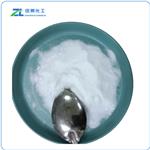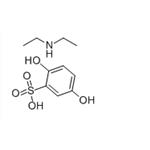Hemostatic;prostaglandin synthesis inhibitor
Haemostatic / Anti Coagulant
ChEBI: Etamsylate is a sulfonic acid derivative and an organosulfur compound.
Etamsylate is a haemostatic agent th at is used for the management of blood loss. Apparently etamsylate increases capillary wall resistance and platelet adhesives by inhibition of the biosynthesis of prostaglandins causing platelet disaggregation in a presence of vascular wound. Recent studies suggest th at etamsylate antagonizes anti-coagulant activity of heparin.
Etamsylate is an antihaemorrhagic and vasoprotective agent. It increases platelet adhesiveness and capillary vascular wall resistance, thereby reducing capillary exudation and blood loss.
Short-term treatment of blood loss in menorrhagiaProphylaxis of surgical bleeding (unlicensed)
Significant: Hypotension (parenteral). Rarely, severe hypersensitivity reaction, including anaphylaxis.
Blood and lymphatic system disorders: Parenteral: Rarely, neutropenia, agranulocytosis, thrombocytopenia.
Gastrointestinal disorders: Nausea, vomiting, diarrhoea, abdominal pain or discomfort.
General disorders and administration site conditions: Asthenia (parenteral). Rarely, fever.
Musculoskeletal and connective tissue disorders: Rarely, arthralgia.
Nervous system disorders: Headache.
Skin and subcutaneous tissue disorders: Rash.
Vascular disorders: Rarely, thromboembolism (parenteral).
Etamsylate is excreted unchanged, mainly in the urine.



